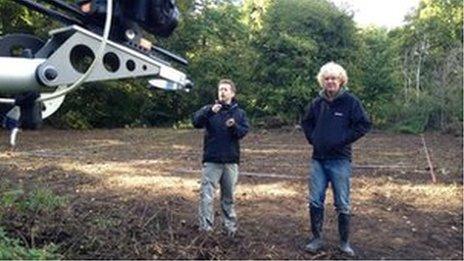Stonehenge dig finds 6,000-year-old encampment
- Published
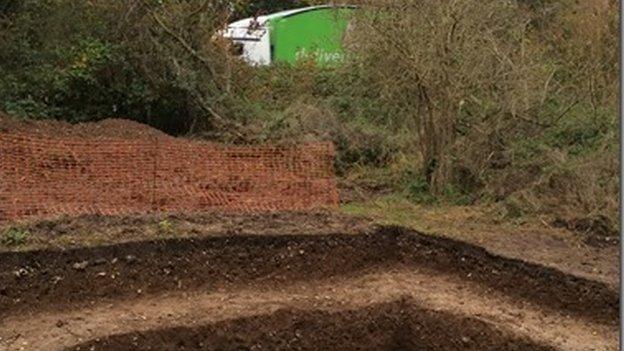
Archaeologists found the encampment during a dig at Blick Mead near Stonehenge
Archaeologists working on a site near Stonehenge say they have found an untouched 6,000-year-old encampment which "could rewrite British history".
David Jacques, from the University of Buckingham, made the discovery at Blick Mead in October, and said the carbon dating results had just been confirmed.
But he also raised concerns about possible damage to the site over plans to build a road tunnel past Stonehenge.
The Department of Transport said it would "consult before any building".
The Blick Mead site is about 1.5 miles (2.4km) from Stonehenge and archaeologists said "scientifically tested charcoal" dug up from the site had "revealed that it dated from around 4000 BC".
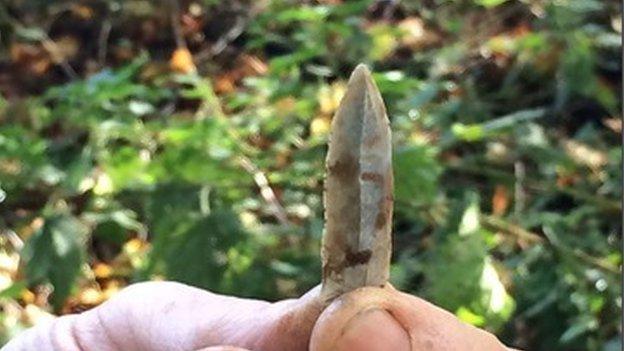
The archaeologists found burnt flints, remains of animals and tools
David Jacques said the dig had also found "evidence of feasting" including burnt flints, tools and remains of giant cattle, known as aurochs, which were eaten by early hunter gatherers.
Mr Jacques said: "British pre-history may have to be rewritten. This is the latest dated Mesolithic encampment ever found in the UK.
"Blick Mead site connects the early hunter gatherer groups returning to Britain after the Ice Age to the Stonehenge area, all the way through to the Neolithic in the late 5th Millennium BC.
"But our only chance to find out about the earliest chapter of Britain's history could be wrecked if the tunnel goes ahead."
-2.jpg)
Archaeologists said the latest carbon date suggested it was continuously occupied between 7500-4000 BC
Andy Rhind-Tutt, a former mayor and current chairman of Amesbury Museum, which part-funded the dig, said the discovery could "provide what archaeologists have been searching for centuries - the answer to the story of the pre-history of Stonehenge."
Earlier this month, the government announced funding for a 1.8-mile (2.9km) tunnel to remove congestion from the main road past Stonehenge.
A Department for Transport spokesman said: "As with any road scheme, we will consult with interested parties before any building begins on the A303.
"English Heritage and National Trust are supportive of our plans, and we will ensure sites of cultural or historical significance are safeguarded as we progress with the upgrade."
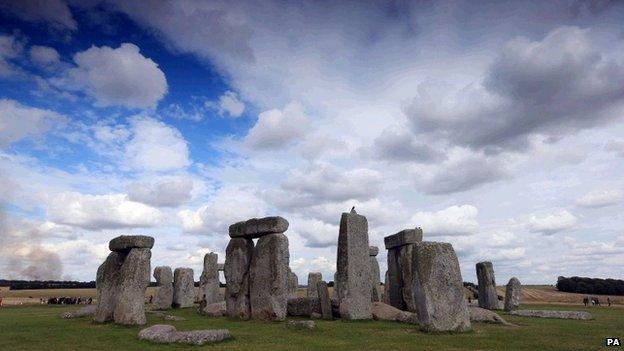
The A303 past Stonehenge is a highly congested route
- Published1 December 2014
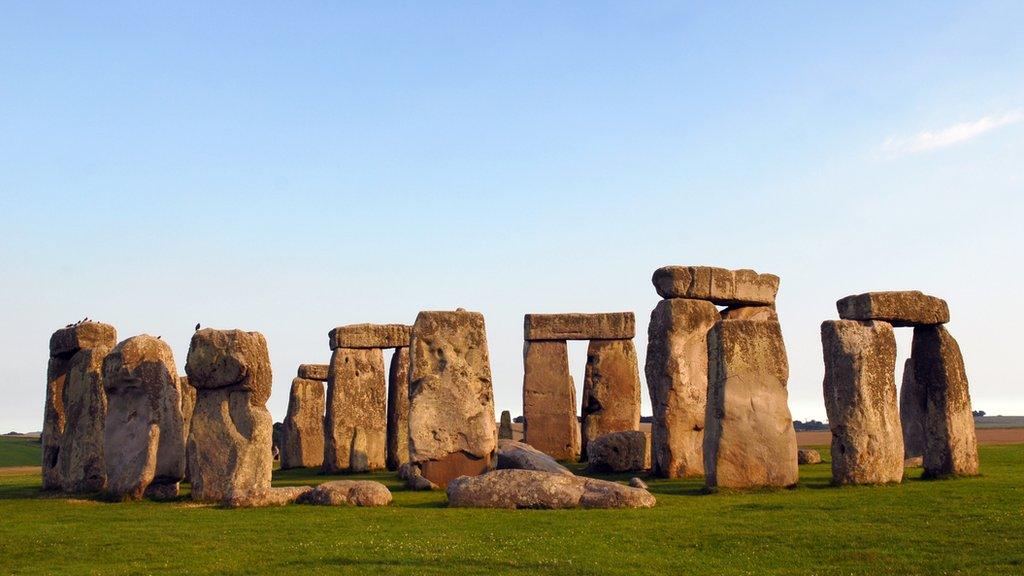
- Published1 December 2014
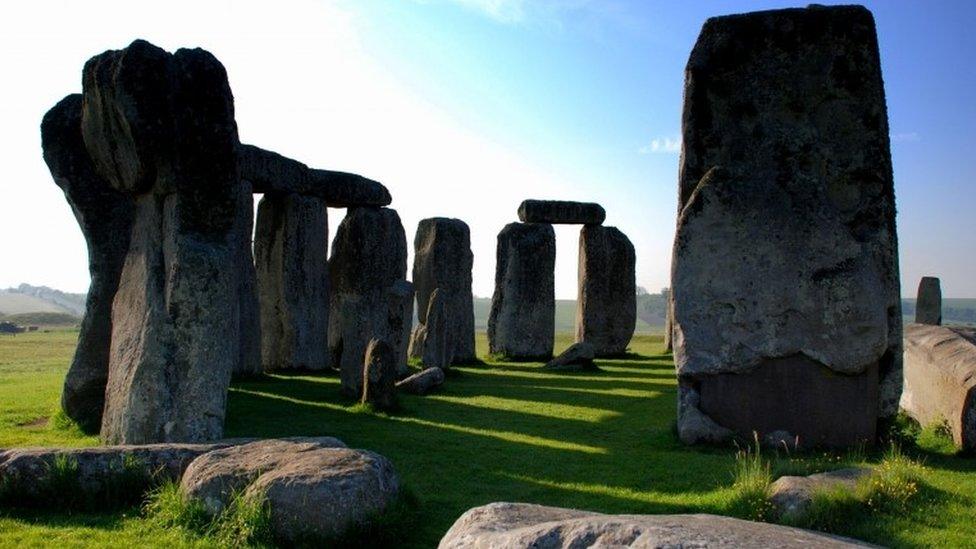
- Published1 December 2014
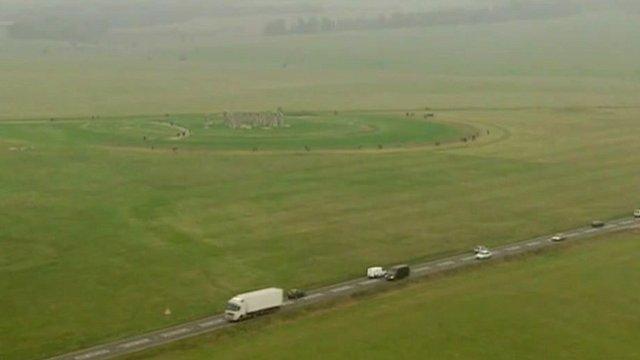
- Published15 October 2013
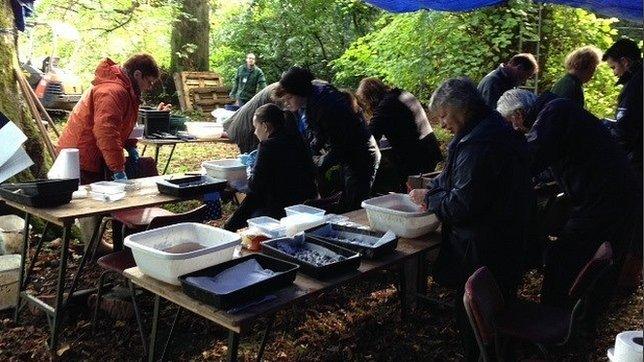
- Published12 October 2013
